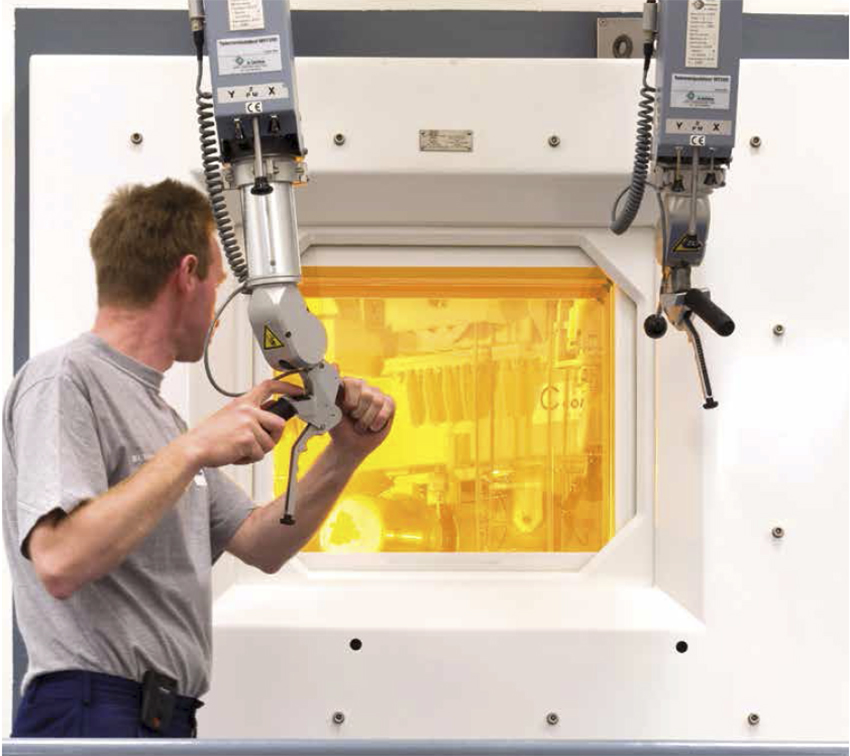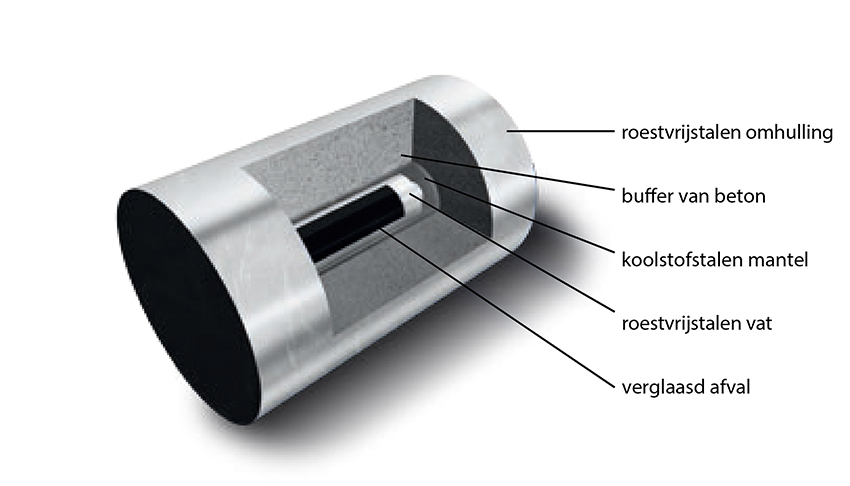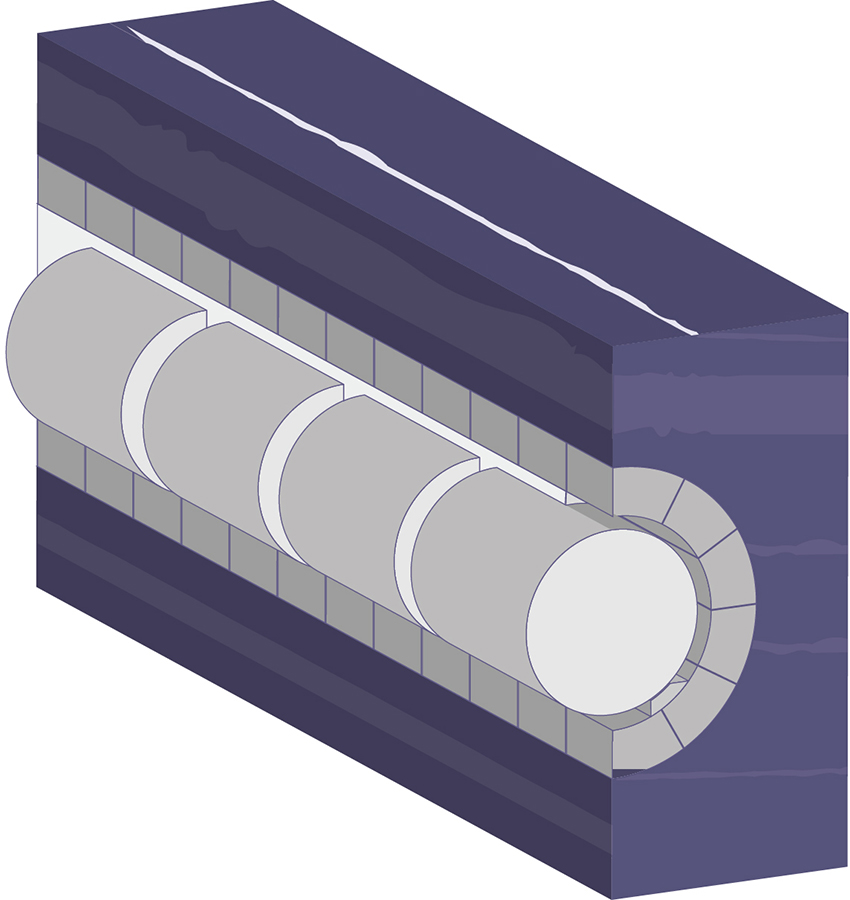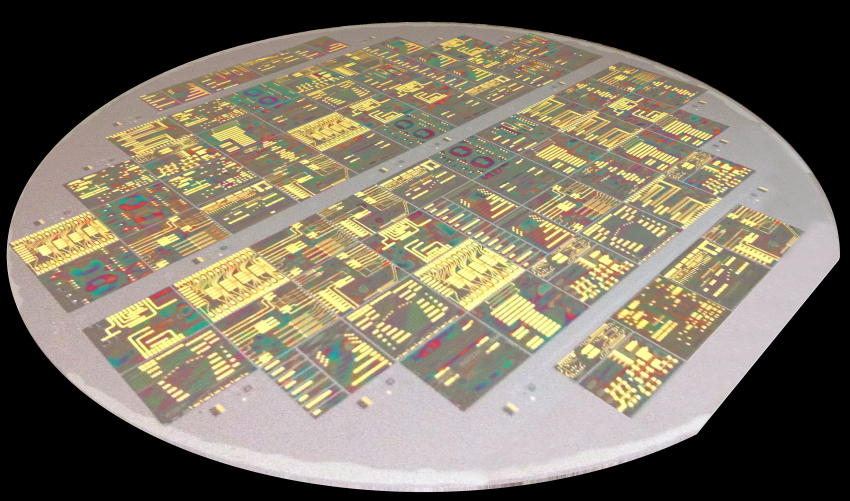
This is how underground disposal works
How do you store nuclear waste underground in such a way that it can be guaranteed to be safe for a million years?
That was the main subject of the seven-year study into the disposal of radioactive material (read 'Underground disposal safe for Dutch nuclear waste').
► How much radioactive waste are we talking about?
Storage is assumed to involve 1500 containers with highly radioactive waste and 160,000 containers with low and medium level radioactive waste in 2100.
The highly radioactive waste originates from the now mothballed nuclear power plant in Dodewaard and the nuclear power station in Borssele. Waste from Borssele has already been factored in as it is due to be decommissioned in 2033. Part of the highly radioactive waste also originates from the research reactors in Petten and Delft.
The low and medium level radioactive waste partly comes from hospitals, research institutes and industry, and slightly less than half is from the Urenco enrichment plant.
► Why storage for a million years?
The most problematic waste is highly radioactive waste. It causes far and away the most radiation. In the first instance, the radiation originates from the waste products caesium (137), strontium (90) and americium (241). All three of these have a relatively short decay time, so that after one thousand years, most of their radioactivity has dissipated. But the waste also includes radioactive substances with a much longer life span, in the order of one hundred thousand to one million years, such as iodine (129), technetium (99) and selenium (79) that also have dangerous exposure levels. And it's the long-lived waste products in particular that necessitate a system that guarantees a safe storage time of one million years.
► How is safe storage possible?
Underground disposal applies the so-called multi-layer barrier system: different layers form a barrier, with each layer in turn providing protection.
The first layer is the packing of radioactive material. For highly radioactive material, the study uses the supercontainer developed in Belgium. This involves first encasing the radioactive material in glass, which is then packed in a 3 cm thick steel casing, which is in turn wrapped in a 65 cm concrete mantle. This is then protected in turn by a steel shell.

The supercontainer, with a total diameter of some 2 m, is then placed in a tunnel dug out of the clay that has thick concrete walls for stability. Once the supercontainers are placed in the tunnels, the void is filled with foam concrete.

The second protective layer is formed by a more than 100 m thick layer of Boom clay that also contains moisture. Boom clay is a layer of clay that is said to have been deposited 30 million years ago, and is known in the Netherlands as the Rupel deposit. The great thing about this material is that it seals itself if cracks form, and it deforms relatively easily: if a system of tunnels is dug, the clay seals it off very effectively.

The third barrier layer is the soil between the Boom clay and the surface of the earth. However, this has a less protective action.
► What happens once the radioactive material has been stored?
Due to the combination of radiative heat and moisture, the concrete of the tunnel wall slowly disintegrates over the first thousand years.
Over the following ten thousand years, this process of erosion continues in the porous intermediate layer of concrete. The steel casing of the supercontainer begins to rust, generating hydrogen gas that dissipates into the clay.
Over the following one hundred thousand years, the steel shell rusts away and the concrete mantle of the supercontainer corrodes away. The container starts to leak, and long-lived radioactive isotopes are released that slowly dissipate into the clay, eventually reaching the groundwater and the surface.

► How much radiation is then released?
The researchers apply a radioactive waste dosage limit to which people may safely be exposed of 0.1 mSv/y. Sievert is a unit of radioactive dosage. Natural background radiation in the Netherlands is 2.5 mSv/y. Model calculations indicate that the highest dose from a leaking storage facility is reached after 200,000 years, but that is then less than the 0.1 mSv/y by a factor of ten.
Groundwater that serves as drinking water source can also become contaminated by a leaking storage facility. The radiation thus caused remains below (again by a factor of ten) the strict 0.008 mSv/m3 that researchers have established as a safety standard for groundwater.

If you found this article interesting, subscribe for free to our weekly newsletter!






